Following are tips and instructions on how to install a suspended ceiling. Spend a few minutes reading the directions thoroughly. This can help save you time and effort.
Inside this document you will find information about:
- Planning for a Suspended Ceiling
- Installing Wall Angles
- Locating and Hanging Suspension Wires for Main Tees
- Installing Main Tees
- Installing Cross Tees and Border Cross Tees
- Installing Ceiling Panels
|

FIG.
1 - Sketch your room dimensions to scale here.
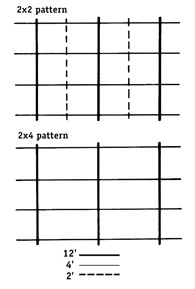
FIG. 2 - Select the grid pattern you want to use.

FIG. 3 - If you're using 2x4 panels, choose from either a standard or reversed pattern.
|

PLANNING FOR A SUSPENDED CEILING
|
Print This Form Out
|
|

FIG. 5 - Allow a minimum of 6" space between the ceilings if you're using recessed lights.

FIG. 6 - Use a level to apply the wall angle at a proper height around the room.

FIG. 7 - Fasten the wall angles securely to the wall at all points.

FIG. 8 - Overlap the inside corners and miter the outside corners.
|

INSTALLING WALL ANGLES
- Determine the exact height at which the suspended ceiling will be installed. Allow a minimum of 3" to 4" clearance between the old ceiling and the new ceiling for installation of the ceiling panels. If clearance is a problem, you may want to use fiberglass ceiling panels, which are more flexible. Additional clearance will be required if you are using recessed lighting (Fig.5).
- After locating the exact position for the suspended ceiling, use a level to draw a line completely around the room indicating where the wall angle will be applied (Fig. 6). Don't assume the original ceiling is level–use a level for accuracy. Set the wall angle low enough to conceal as many pipes, ducts, etc., as possible.
- Fasten the wall angles securely to the wall at all points. Nail them firmly to studs, or use screw anchors or other masonry fasteners on brick or masonry walls (Fig. 7).
- Position the wall angle so that the bottom flange rests on the level line you have drawn on the wall. Take the time to do this right!
- Overlap the wall angle on inside corners (A, Fig. 8), and miter the wall angle on outside corners (B, Fig. 8). Make a temporary wooden miter box if you don't have one. Cut any needed angles with metal cutting snips or a hacksaw.
|
|
|
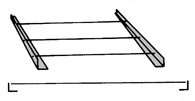
FIG. 9 - Stretch a tight line from the top edge of the wall angle on all sides of the room at each position where the main tees are to be placed.

FIG. 10 - Be sure the suspension wires are securely fastened.
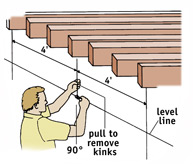
FIG. 11 - Add a suspension wire every 4' along the level line and bend at a 90° angle.
|

LOCATING & HANGING SUSPENSION WIRES FOR MAIN TEES
- If you are going to use recessed lights, install the wiring before putting the suspension wires in place (Fig. 5).
- For recessed lighting, you can use 2x 2 or 2x 4 drop-in
lighting fixtures, which are specially designed for this purpose. You
can also center fluorescent light fixtures over the panels and use a
luminous lay-in panel instead of a regular ceiling panel. These lay-in
panels now come in several attractive designs.
- Refer to your sketch of the room for the location of all main tees (Fig. 1). Main tees should always run at right angles to the joists in the room.
- Locate the position of each main tee by stretching a tight line from the top edge of the wall angle on all sides of the room at each position where the main tees are to be placed (Fig. 9).
- Now, cut the suspension wires to the proper length. The wires should be 12" longer than the distance between the old ceiling and the new guideline string you have stretched to indicate the position of each main tee.
- Locate the first suspension wire for each main tee directly above the point where the first cross tee meets the main tee. Check your original sketch of the room to determine this location.
- Be sure the suspension wires are securely fastened. Apply them to the ceiling with screw eyes, screw hooks, nails, or drilling (Fig. 10).
- Attach a suspension wire every 4' along the level guideline
(Fig. 11). Stretch each wire to remove any kinks and make a 90°
bend where the suspension wire crosses the level line.
|
|
|
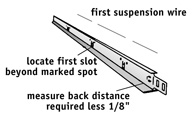
FIG. 12 - Main tees generally have cross tee slots every 12".
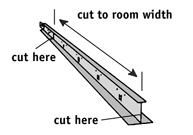
FIG. 13 - If the room is less than 12' across, cut the main tee to the width of the room less 1/8" for the thickness of the wall angle.
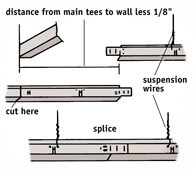
FIG. 14 - Main tees can be spliced for rooms wider than 12'.
|

INSTALLING MAIN TEES
- Most main tees are 12' long and have cross tee slots punched every 12" beginning 6" from each end (Fig. 12).
- Refer to your layout sheet to determine the distance from the wall to the first cross tee. Now measure this distance along the top flange of the main tee and locate the slot just beyond this point.
- From this slot, measure back the same distance, subtract
1/8" and saw the main tee at that point. The 1/8" subtraction
is for the thickness of the wall angle.
- If the wall angles are not square, position the cross tee slots accordingly.
- When main tees are installed in rooms less than 12' across, cut the main tee to the exact measurement of the room, allowing 1/8" for the thickness of the wall angle (Fig. 13).
- For rooms wider than 12', the main tee can be spliced (Fig. 14). Be sure to align the splice so that the suspension wires are correctly positioned. Splice carefully, or all the main tees will be thrown off.
- Install the main tees so that they are all level with the wall angle already mounted. Use a long level for this.
|
|
|
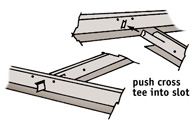
FIG. 15 - Insert the cross tees into the slots in the main cross tees.

FIG. 16 - Your final tee arrangement will look similar to this.
|

INSTALLING CROSS TEES & BORDER CROSS TEES
- Install the cross tees by inserting the ends of the cross tees into the slots in the main tees (Fig. 15). Use the manufacturer's instructions for fitting the cross tees into position.
- Determine the location of the cross tees by the pattern you selected–either 2'x2' or 2'x4' (Fig. 2).
- Be sure the lock tab on the cross tee is on the outside of the slot (Fig. 15). This attachment is slightly different in some types of tees.
- You can remove most cross tees by depressing the lock tab with a screwdriver.
- Border cross tees are installed between the wall angle and the last main tee.
- Measure from the last tee to the wall angle, allowing 1/8" for the thickness of the wall angle. Cut the cross tees and install them by inserting the connector in the main tee and resting the cut edge on the wall angle.
|
|
|

FIG. 17 - Tilt the ceiling panels slightly and drop them into position.
|

INSTALLING CEILING PANELS
- Your final main and cross tee arrangement will look similar to Fig. 16. The top part of the illustration shows an arrangement of a 2'x4' layout, while the lower half shows main and cross tees arranged for a 2'x2' layout.
- Drop the ceiling panels into position by tilting them
slightly, lifting them above the framework and letting them fall into
place (Fig. 17).
|
| Check your state and local codes before starting any project. Follow all safety precautions. Information in this document has been furnished by the National Retail Hardware Association (NRHA) and associated contributors. Every effort has been made to ensure accuracy and safety. Neither NRHA, any contributor nor the retailer can be held responsible for damages or injuries resulting from the use of the information in this document.
|
|


